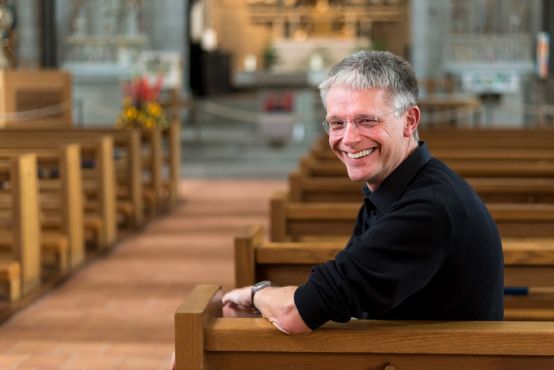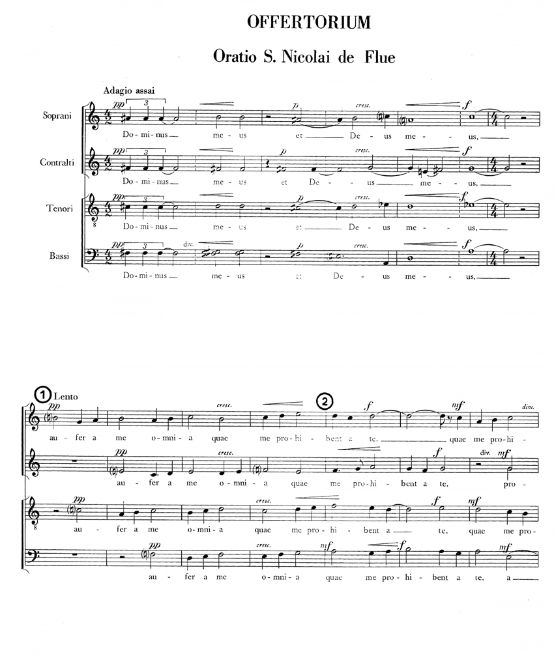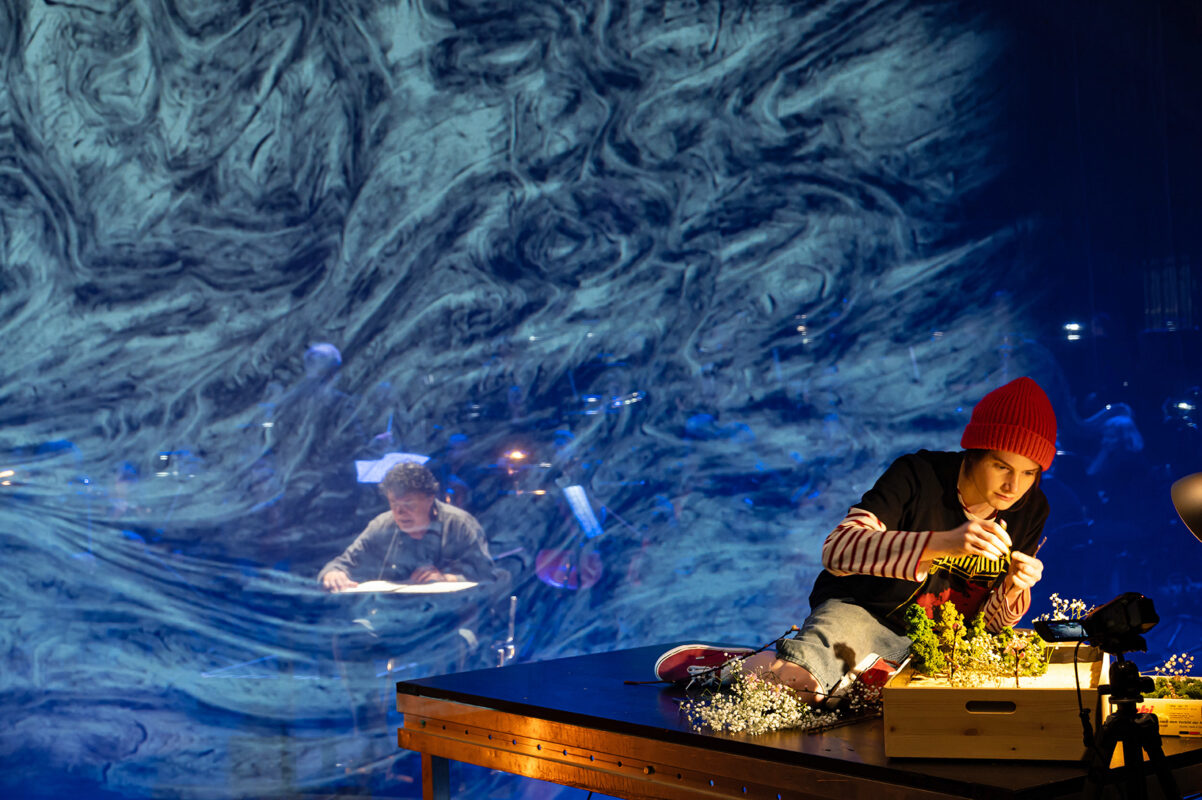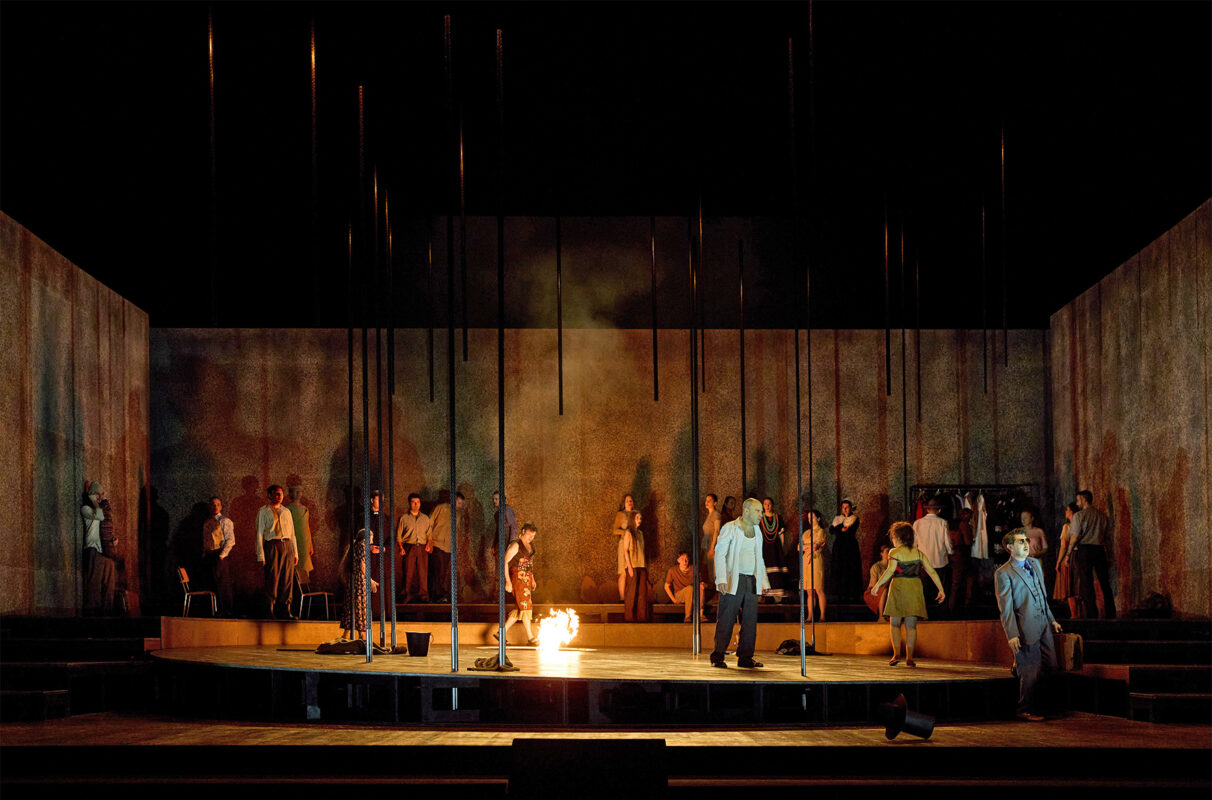Prophet in his own land
The Basel Madrigalists are unearthing a forgotten treasure by the Swiss composer Benno Ammann.

It was a little disconcerting when Raphael Immoos led the singers on February 9 after the Gloria of the Missa "Defensor Pacis" to the front rows of seats in Zurich's St. Peter and Paul Church and reached for the microphone. But what the Basel Madrigalists presented that evening under their conductor and artistic director really did require some explanation. The composer of the work, the musician born in Gersau SZ in 1904, was already in need of an introductory commentary Benno Ammann. He can justifiably be described as a typical representative of those prophets who are more respected abroad than at home. After the Second World War, he enjoyed some international success as a conductor, but this had little resonance in Switzerland. It is unclear why he did not pursue this career at all later on and restricted himself to conducting a few choirs in the Basel region.
It is likely that Ammann needed more time to compose. By the time of his death in Rome in 1986, he had created an extensive oeuvre of around 600 works, whose fascinating stylistic breadth ranged from the late romantic harmony of his Leipzig teacher Sigfrid Karg-Elert to free-tonal and twelve-tone works and serialism. From the 1950s onwards, he concentrated on electro-acoustic music, for the realization of which he travelled to electronic studios from Rome to New York until the end.
The work itself then required further explanation. The Missa "Defensor Pacis" (Defender of Peace) in honour of Niklaus von Flüe was composed immediately after the war and was premiered in the Sistine Chapel on the occasion of Brother Klaus' canonization, which was something of a sensation. Unfortunately, this triumphant beginning was immediately followed by a crash: the work disappeared into oblivion and has only now been resurrected - this year it will receive its Swiss premiere in eight concerts.
Between austerity and sensuality
In the introduction, Raphael Immoos declared the rediscovery of this work to be a sensation, the piece to be as significant as Frank Martin's Mass, which also remained undiscovered for a long time. But even if Immoos has a great deal of experience in dealing with unknown pieces, their research and revival, such a lofty prediction has yet to be confirmed. However, the Zurich concert showed that Ammann's Missa "Defensor Pacis" ad 6-12 voces inaequales is an impressive work that does not need to shy away from comparison with Martin.
Reminiscent of the Flemish Renaissance and the Palestrina style, it moves in a tonal or modal space, leaving its modernity in the Kyrie and Gloria only flash up in occasional dissonances. Despite all the complex linearity, the voices repeatedly combine to create modern sound surfaces. From the middle of the work, the Offertorythe prayer of St. Niklaus von Flüe, the tone changes. What was previously still austere in places suddenly becomes catchy, more sensual. Almost mythical sounds now dominate the work. Individual voices rise up like invocations from the whole and allow the individual to emerge. Especially the Agnus Dei with his haunting, tranquil and peaceful closing of the work. Dona-nobis-pacem-invocation, left one moved.
-

Vertonung der lateinischen Version von Niklaus von Flües weit verbreitetem Gebet «Mein Herr und mein Gott …» im Offertorium. © by Hug Musikverlage, Zürich. Mit freundlicher Genehmigung.
The strong effect was also due to the performance of the Basel Madrigalists. They mastered the difficult score, which was peppered with many delicate passages, with masterful rhythm and intonation, remaining clearly audible and comprehensible even in the polyphony. With increasing familiarity, the one or other passage will certainly be mastered a little more smoothly.
The second introduction of the evening was actually dedicated to the work of the composer Joachim Raff, who was born in Lachen in 1822 and whose works included the premiere of a fragment. Immoo's speech, however, turned into a passionate plea for Swiss music, which is given far too little recognition in this country. Raff's work, for example, which was also performed Father Noster is certainly comparable to Verdi's counterpart. And even if one does not entirely share the latter assessment, Immoos' enthusiasm and commitment to the neglected Swiss musical heritage is infectious - beyond the evening! Next year, the Basler Madrigalisten will not only embark on a CD production of Ammann's Mass, but it will also be reissued by Hug Music Publishers and thus made available to other choirs. It would be great if this initiative by a top ensemble could actually help the work to have a broader impact. At least for ambitious amateur choirs, working with the Missa "Defensor Pacis" could be a worthwhile venture.








